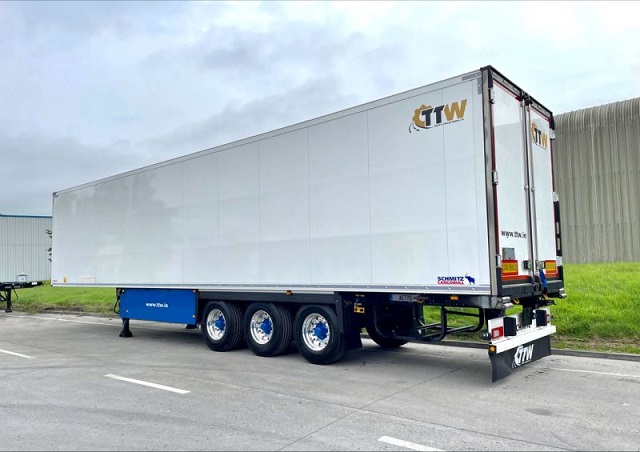Short-term road freight demand is down with high consumer prices and lagging wages pushing down demand for the distribution of goods throughout Europe, resulting in further falls in freight rates on the spot market, according to the European Road Freight Rate Benchmark report.
 According to the report, the contract market has seen much smaller rate falls due to the elevated costs base versus 2022. This has allowed the Spot Index to drop below the Contract Index for the first time in six years.
According to the report, the contract market has seen much smaller rate falls due to the elevated costs base versus 2022. This has allowed the Spot Index to drop below the Contract Index for the first time in six years.
Other report finings include:
- The Q2 2023 European Road Freight Spot Rate Benchmark Index stood at 126.3, 3.5 points lower than in Q1 2023 and 7.5 points down year on year.
- The Q2 2023 European Road Freight Contract Rate Benchmark Index stood at 126.9, 0.2 points lower than in Q1 2023 but 2.8 points higher than in Q2 2022.
- Q2 2023 is the first time that the contract rate index has been higher than the spot rate index in the six years of data available.
- New data from IRU shows that driver shortages across Europe eased in 2023, with 7% of driver positions unfilled.
- Freight rates are expected to remain subdued in 2023 but high costs continue to sustain a relatively high base.
Rate falls in the contract market have been much more muted than in the spot market. The two largest reasons for this are improved business sentiment and a structural lag in prices reflecting falling costs.
By June, European consumer price index for energy had reduced by 18.4 points versus their peak in October 2022, reducing industrial costs across the continent. The result is a slightly more positive view than a year ago, which may encourage companies to secure greater capacity on annual contracts up for renewal.
In addition, higher carrier costs have been priced into contracts due to labour cost and fuel prices, these may have fallen from their highs in 2022, but remain higher than their pre-Ukraine war base. The EU weighted average diesel price in July 2023 remains up 16.9% versus July 2021. The result is temporary greater demand for capacity in the contract market alongside a high-cost base.
Lower prices have also encouraged many shippers to tender contracts in what they see as a buyer’s market, increasing demand for contracted capacity.
Thomas Larrieu, Chief Executive Officer at Upply, commented, “In the first half of 2023, we are seeing the effects of the economic slowdown in Europe, illustrated by the sharp fall in spot prices. Nevertheless, it is important to note that road freight prices in Europe remain on average 12-15% higher than before the pandemic, reflecting a structural increase in hauliers’ costs.”
According to the latest IRU driver shortage data, the shortage of truck drivers in Q2 2023 was slightly lower than in 2021, with 7% of truck driver positions remaining unfilled. Though the evidence shows that driver shortages are easing, the shortage is still applying upward pressure on rates.
Vincent Erard, IRU’s Senior Director for Strategy and Development, added, “The drop in demand for road freight should not distract us from the structural problems of the European truck driver population: less than 6% are under 25 years old while more than a third of those over 55 will retire in five to ten years. More than 1.2 million truck driver jobs could be vacant in five to ten years due to driver retirements alone. We must act now to improve access to the profession, facilitate the recruitment of drivers from third countries and enhance the attractiveness of the profession.”
The outlook for European road freight in the coming months is for further reduction in demand-side pressure, freeing up capacity and allowing for the possibility of further rate falls in the spot market. Falling order levels, compounded by 22-year high European Central Bank interest rates, indicate that demand pressure on the contract market will continue to ease, allowing for falls in the second half of 2023, albeit to a higher floor due to a larger carrier cost base.
Michael Clover, Ti’s Head of Commercial Development, said, “Road freight rates across Europe are expected to continue falling through Q3 as demand remains slack and available capacity remains high. With demand is not expected to pick up again until 2024, we would expect rates to continue their downward trajectory for the foreseeable future.


